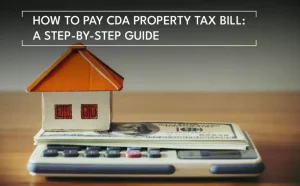A passport is an essential travel document that allows you to visit other countries. The Directorate General of Immigration & Passports (DGIP) is responsible for issuing Machine Readable Passports (MRPs) in Pakistan.
Requirements to Apply for a Passport in Pakistan
Before you even think about going to the passport office make sure you have these key things ready:
- Original Valid CNIC (Computerized National Identity Card): This is the most important document. Your passport application relies heavily on your NADRA CNIC should be updated on your CNIC).
- Original Previous Passport (if you have one): If you are renewing your passport then must bring your old one.
- Bank Challan (Fee Payment Receipt): You will need to pay the passport fee first and bring the original receipt.
- Proof of Residence: Sometimes required like a utility bill (electricity, gas, phone) with your name and address.
- Photocopies: Always keep several clear photocopies of all your original documents.
- For Children (Under 18):
- Original NADRA CRC (Child Registration Certificate) or Form B.
- Original CNICs/NICOPs of both parents.
- Both parents must accompany the child. If one parent is not present then a legally attested NOC (No Objection Certificate) and their valid ID are required.
- The child should also have a valid NICOP if they are overseas.
Types of Passport Applications in Pakistan
There are generally three types of applications:
- New Passport: For those applying for a Pakistani passport for the very first time.
- Passport Renewal: When your existing passport is about to expire (usually within 7 months of expiry) or has already expired.
- Lost/Damaged Passport: If your passport is lost or damaged. For a lost passport, you will first need to file a Police Report (FIR) and bring a copy of it.
پاکستانی Passport Categories and Fees:
Passports in Pakistan come with different validities and page counts:
- Validity: You can choose between a 5-year یا 10-year validity.
- Pages: You can choose from 36 pages, 72 pages یا 100 pages depending on how frequently you travel.
- Processing Time (and Fee):
- Normal: Standard processing time (usually 21 working days). This is the cheapest option.
- Urgent: Faster processing (usually 5 working days) but costs more.
- Fast-Track/Executive: The quickest option (sometimes even same day or next day in major cities) but it is the most expensive.
How to Pay the Fee for Passport in Pakistan:
You can use this app to calculate your fee and generate a PSID (Payment Slip ID). This PSID can then be paid through:
- ATM
- Internet banking
- Over the counter at 1-link member bank branches (like NBP, HBL, Bank Alfalah, etc.)
This saves you from long queues at the bank. Make sure to keep the original paid challan (receipt).
The Application Process for a Passport in Pakistan
Once you have your documents and fee receipt then here is what to expect at the Regional Passport Office (RPO):
When you arrive at the RPO your documents will be checked to make sure everything is complete and in order. Make sure photocopies are properly stapled.
you will get a token number. Wait for your turn.
your fingerprints will be taken using a digital scanner. Make sure your fingers are clean and free of ink or henna.
Your photograph will be taken directly at the office. There is no need to bring passport sized photos from home.
An official will enter all your personal details into the system by cross-referencing with your CNIC. This is where you should carefully review the information on the screen to avoid any mistakes.
Interview and Verification for Passport
- You will have a brief interview with a passport officer. They may ask some questions to verify your identity and the information provided.
- For new applications or certain cases, your details might be sent for further verification (e.g., to NADRA or security agencies).
- After successful completion of the process, you will be given a receipt with a tracking number. Keep this receipt safe!
Tracking Your Passport in Pakistan
You can usually track the status of your passport application online using the tracking number provided on your receipt. The DGIP website often has a tracking facility.







